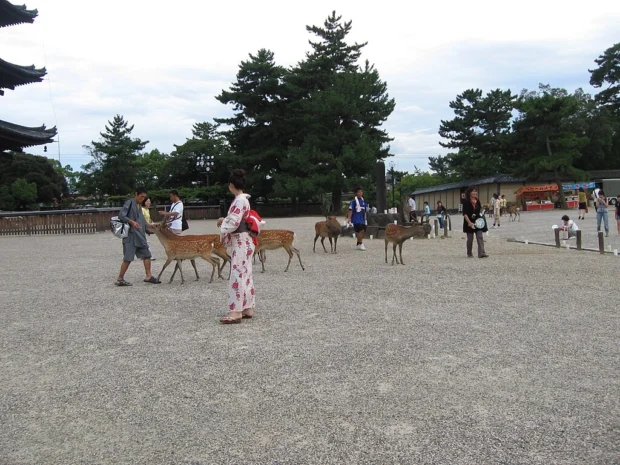Walking through Nara is like stepping into a quiet storybook filled with temples, gardens, and friendly deer wandering freely in parks. This charming city, once the capital of Japan, keeps its calm and ancient beauty while welcoming visitors from all parts of the world. Whether you arrive by train or bus, Nara’s peaceful streets and historic sites invite you to slow down and notice the simple wonders around you.
Table of Contents
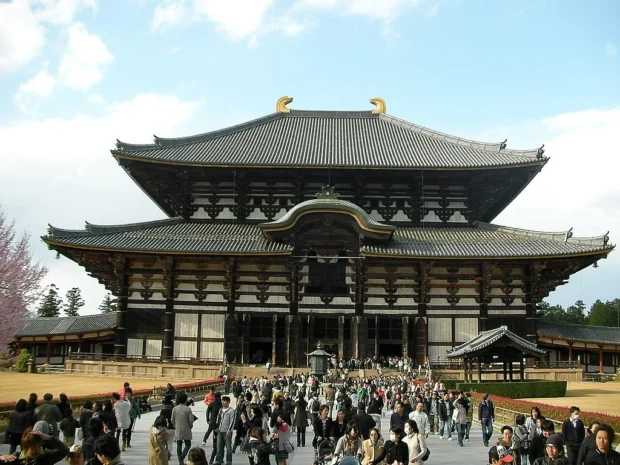
Arrival and Moving Around Nara
When you reach Kansai International Airport near Osaka, a quick train ride on the JR or Kintetsu line will take you comfortably to Nara city center. The trains are clean and run often, making travel simple even if you don’t speak Japanese. Once in Nara, buses and bicycles are popular choices for visiting various sites. Many temples and parks are close enough to walk between, so keeping comfortable shoes ready is a good idea.

While exploring, it’s helpful to remember a few phrases. When greeting shopkeepers or people you meet, say konnichiwa (hello). When you want to thank someone, arigatou gozaimasu shows politeness. Before entering a temple or shrine, people often say onegai shimasu, which means “please” and expresses respect.
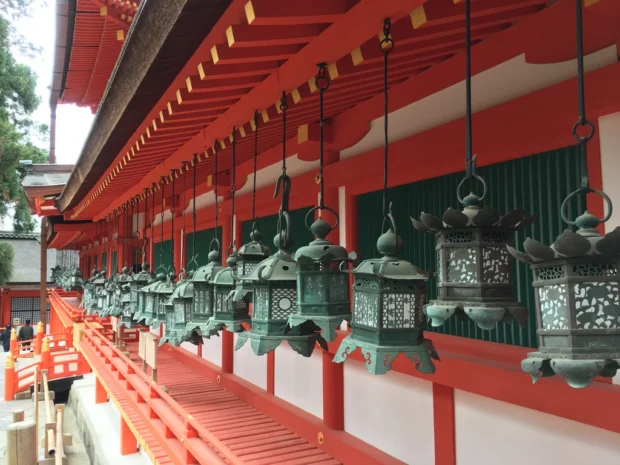
Famous Shrines and the Gentle Deer of Nara Park
The heart of Nara is its large park filled with deer, considered messengers of the gods in Shinto tradition. These deer roam freely; they approach visitors calmly but pay attention to buying special “deer crackers” sold nearby to feed them. The deer are part of Nara’s living heritage, and locals say you should bow gently to them as a sign of respect-it often makes a gentle deer bow back, a cute moment many visitors cherish.
For those enchanted by Nara’s serene shrines, the vibrant torii gates of Fushimi Inari Shrine in Kyoto provide a striking contrast with their fiery beauty and rich traditions.
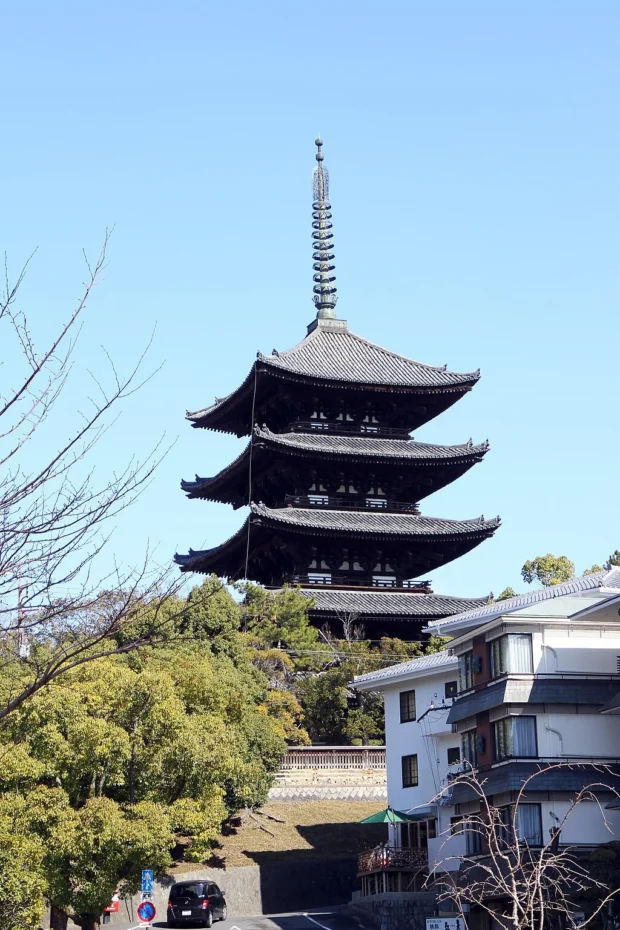
Inside the park, the famous Todai-ji Temple stands as a giant wooden building housing the Great Buddha, one of the largest bronze statues in the world. The temple’s main hall is immense and centuries old, inviting silent admiration. Near this temple, the Kasuga Taisha Shrine glows softly with hundreds of bronze and stone lanterns that seem magical when lit during festivals.
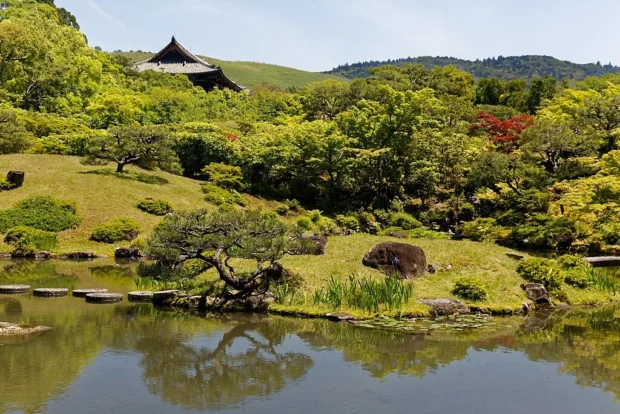
Historical Paths and Old Town Atmosphere
Beyond the main park, little streets and old wooden houses offer peaceful walks where local crafts and souvenir shops hide. You will find shops selling traditional Nara calligraphy brushes, a special local art. Strolling these areas, the sounds of wooden sandals on stone paths and the scent of fresh tea can surprise you like postcard moments you don’t expect.
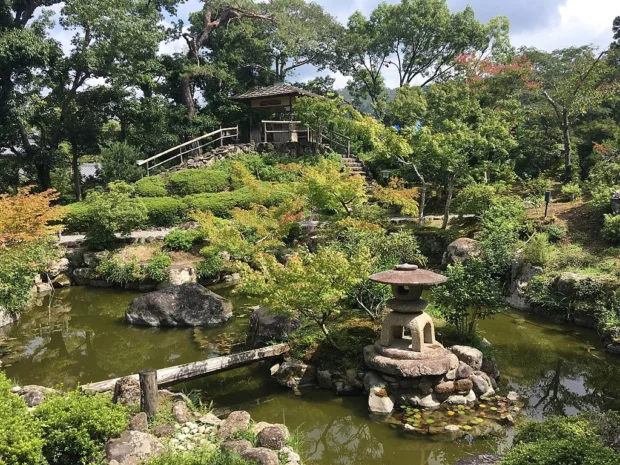
One lesser-known spot is the Isuien Garden, a splendid example of Japanese garden art. Its ponds and tea houses create a quiet world where time seems to slow. Sitting in the tea pavilion with a cup of matcha tea is a peaceful break from sightseeing and feels like stepping back to an old Japanese painting.
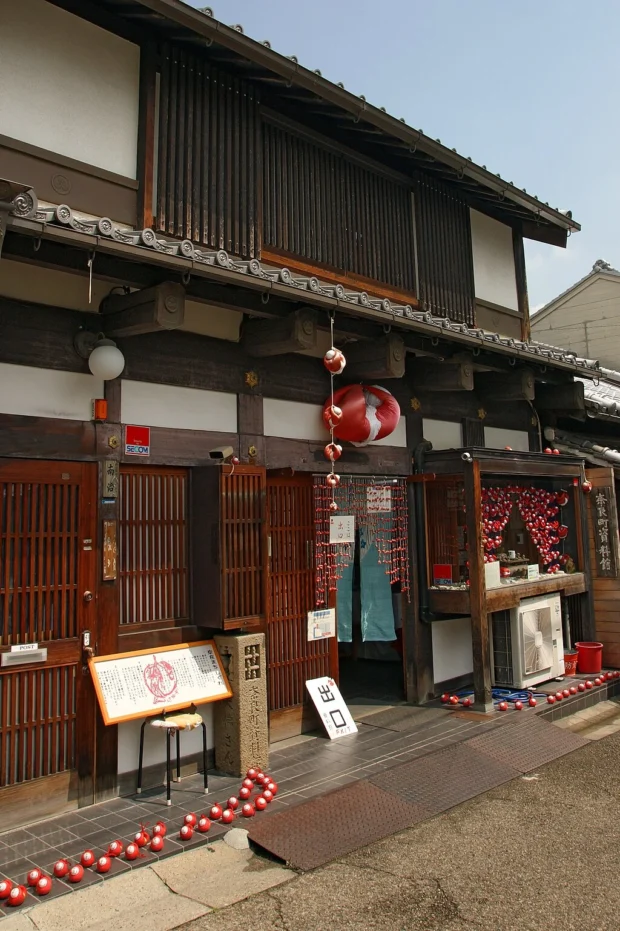
Nara’s Food Flavors and Where to Taste Them
The food in Nara is gentle but full of unique tastes. Try kakinoha-zushi, sushi wrapped in persimmon leaves-a specialty of Nara that carries a subtle leaf aroma into every bite. Near the train stations and markets, local stalls offer yuba (tofu skin) dishes, a reminder of the city’s Buddhist roots where vegetarian meals are common.
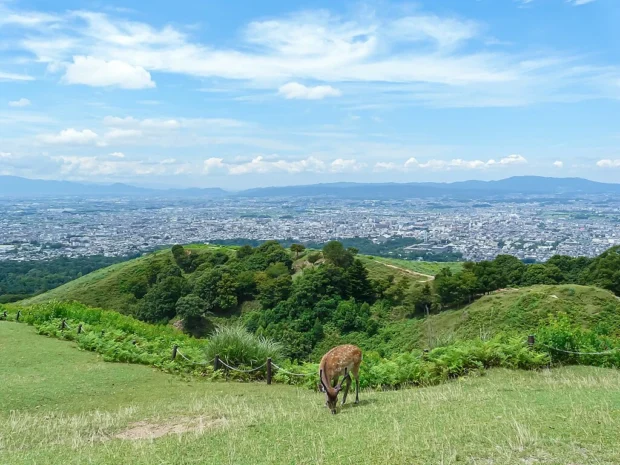
In a casual eatery district around Naramachi, the old town area, small restaurants invite you to try udon noodles with locally grown vegetables or warm mochi sweets served with green tea. The atmosphere here feels friendly and relaxed, making food tasting feel like sitting at a neighbor’s table.
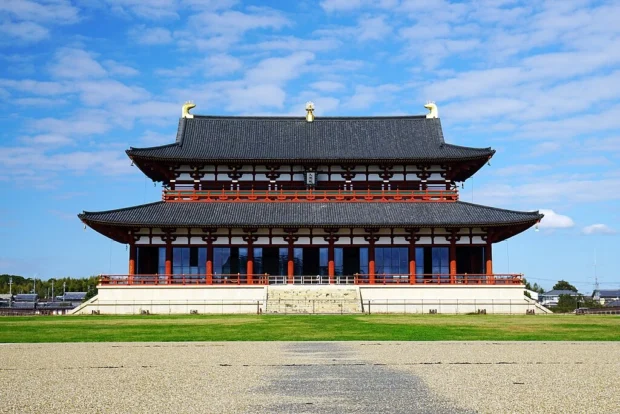
Customs and Courtesies to Remember
Japanese culture values respect and calm, which you will notice in Nara’s temples and streets. When visiting temples, remove your shoes at the entrance if asked, and speak in quiet voices. It’s also polite to bow slightly when thanking a shopkeeper or when someone helps you. Avoid loud phone conversations on trains or buses, as quiet is preferred in public places.
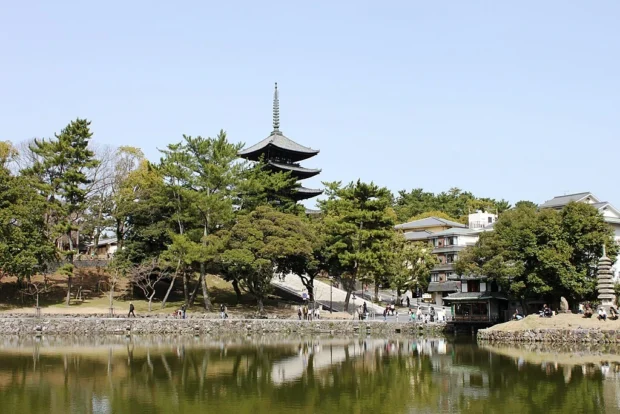
Nara’s simple “do not” is to avoid feeding the deer without the special crackers; regular food can upset their health. Also, don’t touch temple objects or art without permission-these are sacred and sometimes fragile.
Seasonal Events and Festivals
Nara hosts calm and beautiful festivals. One famous event is the Lantern Festival at Kasuga Taisha Shrine in February, when the hundreds of lanterns light up the night, creating an enchanting scene. In autumn, the changing colors around park trees offer a rich tapestry of reds and golds, perfect for gentle walks and photography.
During these times, you might hear locals wishing each other otsukaresama desu-a phrase that means “thank you for your hard work” and is used to show appreciation, even during casual chat. It’s a lovely way to join the quiet rhythm of daily life in Nara.
Quiet Places to Stay in Nara
Nara offers several traditional guesthouses and inns tucked in serene neighborhoods near the main park or old town. Staying in one of these lets you wake up to calm streets and the gentle sound of temple bells. Many places offer tatami-mat rooms and shared baths, giving a simple but authentic Japanese living experience. If you prefer, modern accommodations are also available close to the train stations.
Choosing a place near either Nara Park or the Naramachi area helps you enjoy early morning walks or late-night quiet without much travel time. These areas are safe and full of character-a perfect base to understand this city’s soft and respectful mood.
A Last Thought on Nara’s Spirit
Visiting Nara is not just about seeing temples or feeding the deer; it is about feeling the peaceful way life flows here. Whether you stand quietly before the Great Buddha, walk slowly through gardens framed by ancient trees, or share a bowl of warm udon with strangers smiling softly, Nara invites you to slow down and appreciate small beauty.
In this city, nature and tradition live side by side with gentle respect. After a few days, you might find yourself saying sayonara to Nara with a smile, already longing to return to its quiet magic.
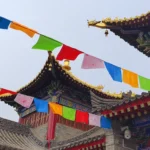
A Chinese tour guide with deep knowledge of the Far East, its traditions, and culinary secrets.
- August 2009 Nara -84737 by Syced on Wikimedia Commons – cc0
- TODAIJI TEMPLE at Nara Japan – panoramio by yuichiro anazawa on Wikimedia Commons – cc by 3.0
- 005 Autumn in Nara Park, Japan – Nara deer CC-BY Creative Commons Attribution by Marek Ślusarczyk (Tupungato) Photo portfolio on Wikimedia Commons – cc by 3.0
- Kasuga-taisha Shrine, Nara Prefecture; April 2017 (07) by Olivier Bruchez on Wikimedia Commons – cc by-sa 2.0
- Kōfuku-ji HDSR IMG 3442 by Hyppolyte de Saint-Rambert on Wikimedia Commons – cc by-sa 4.0
- Isui-en garden, Nara – May 11, 2018 (1) by Kimon Berlin on Wikimedia Commons – cc by-sa 2.0
- Yoshiki-en by Christophe95 on Wikimedia Commons – cc by-sa 4.0
- Naramachi-shiryokan Nara01n3200 by 663highland on Wikimedia Commons – cc by 2.5
- Mount Wakakusa, View from Summit of a Mountain 001 by Naokijp on Wikimedia Commons – cc by-sa 4.0
- 181103 Heijo Palace Daigokuden Nara Japan02bs by 663highland on Wikimedia Commons – cc by-sa 4.0
- Kofukuji06 by Mass Ave 975 on Wikimedia Commons – cc by-sa 3.0
